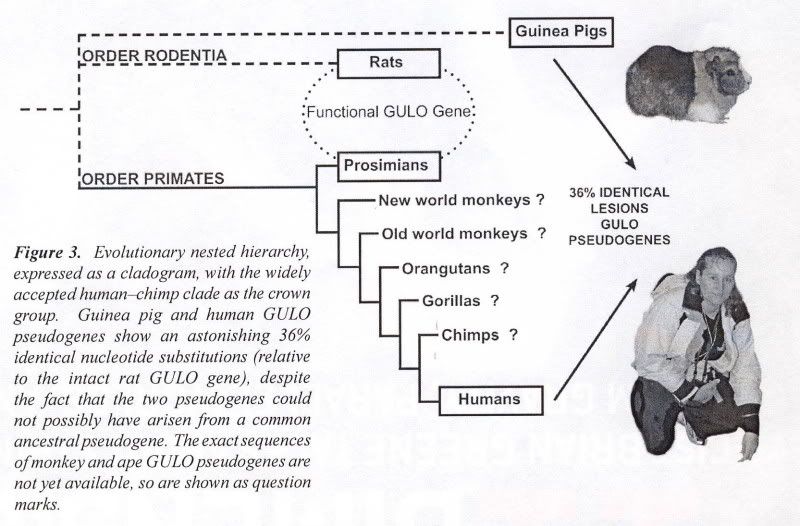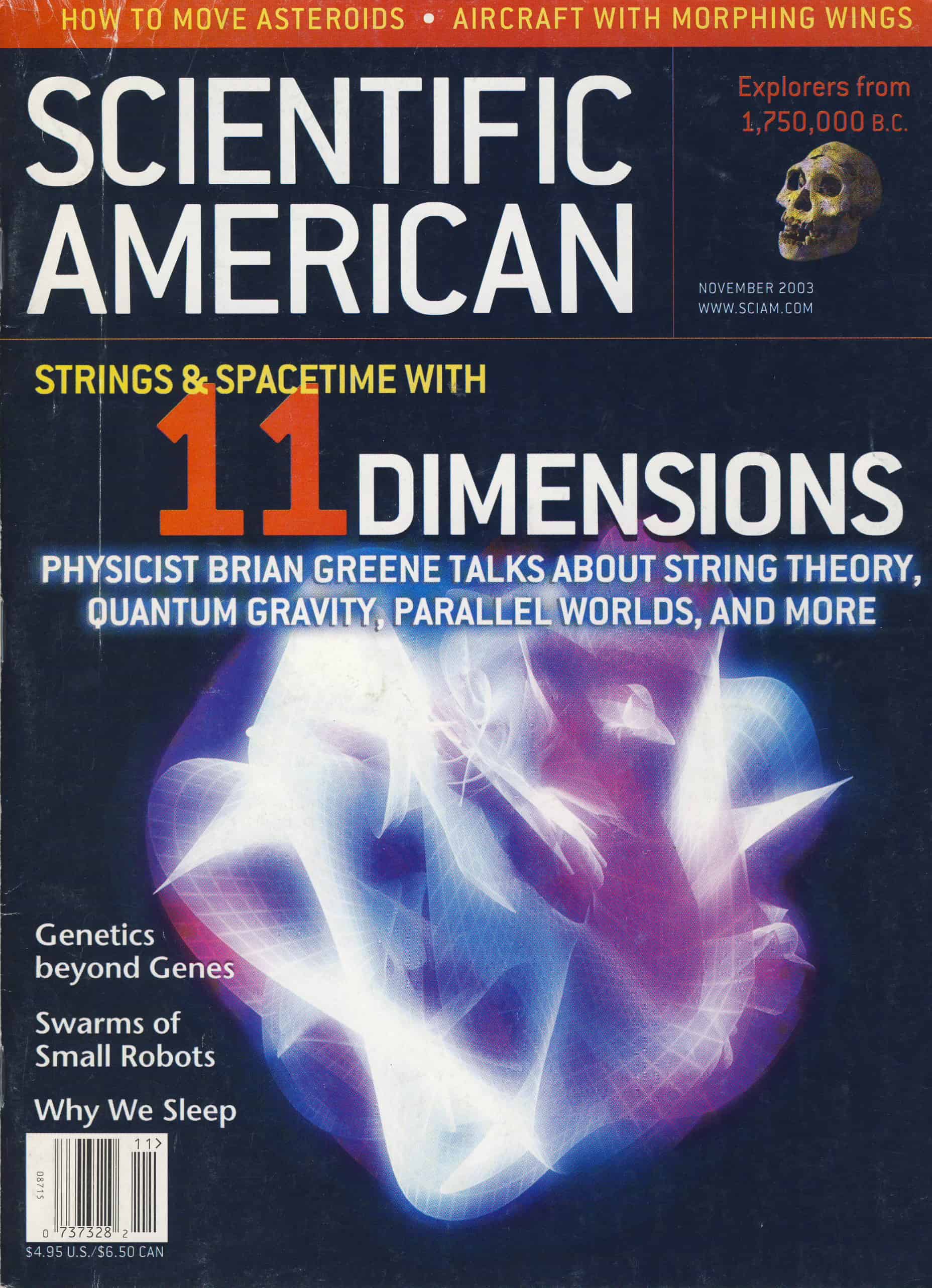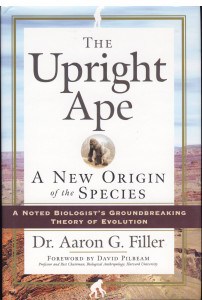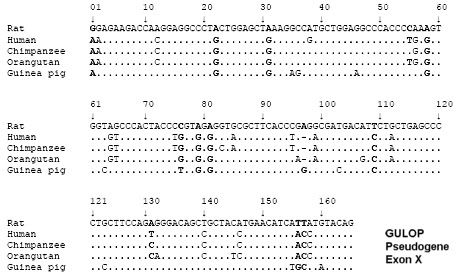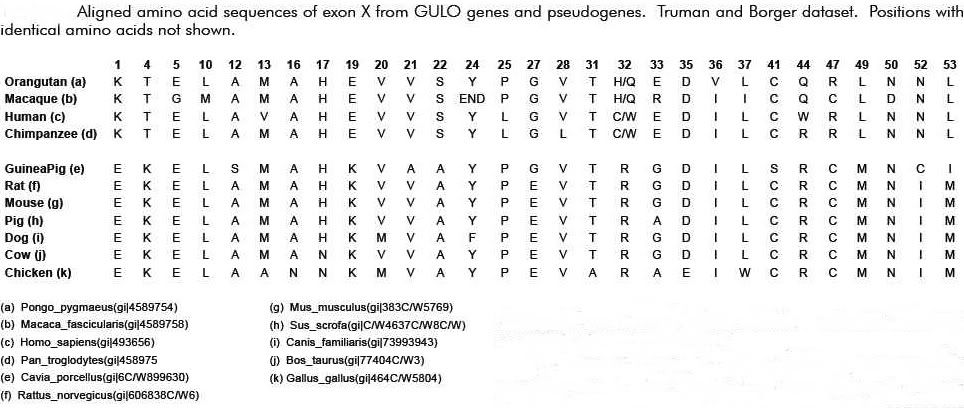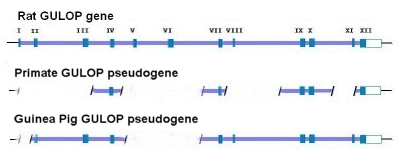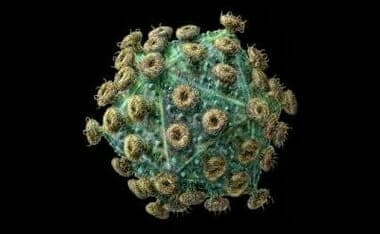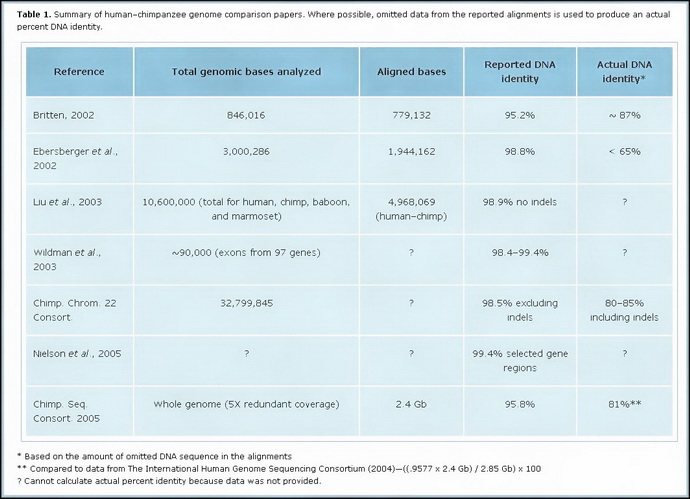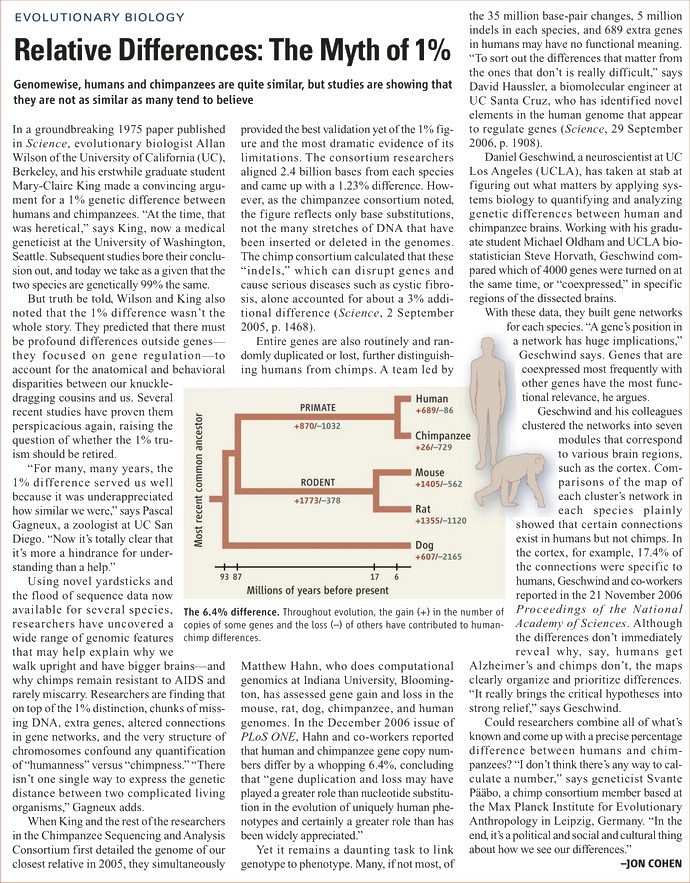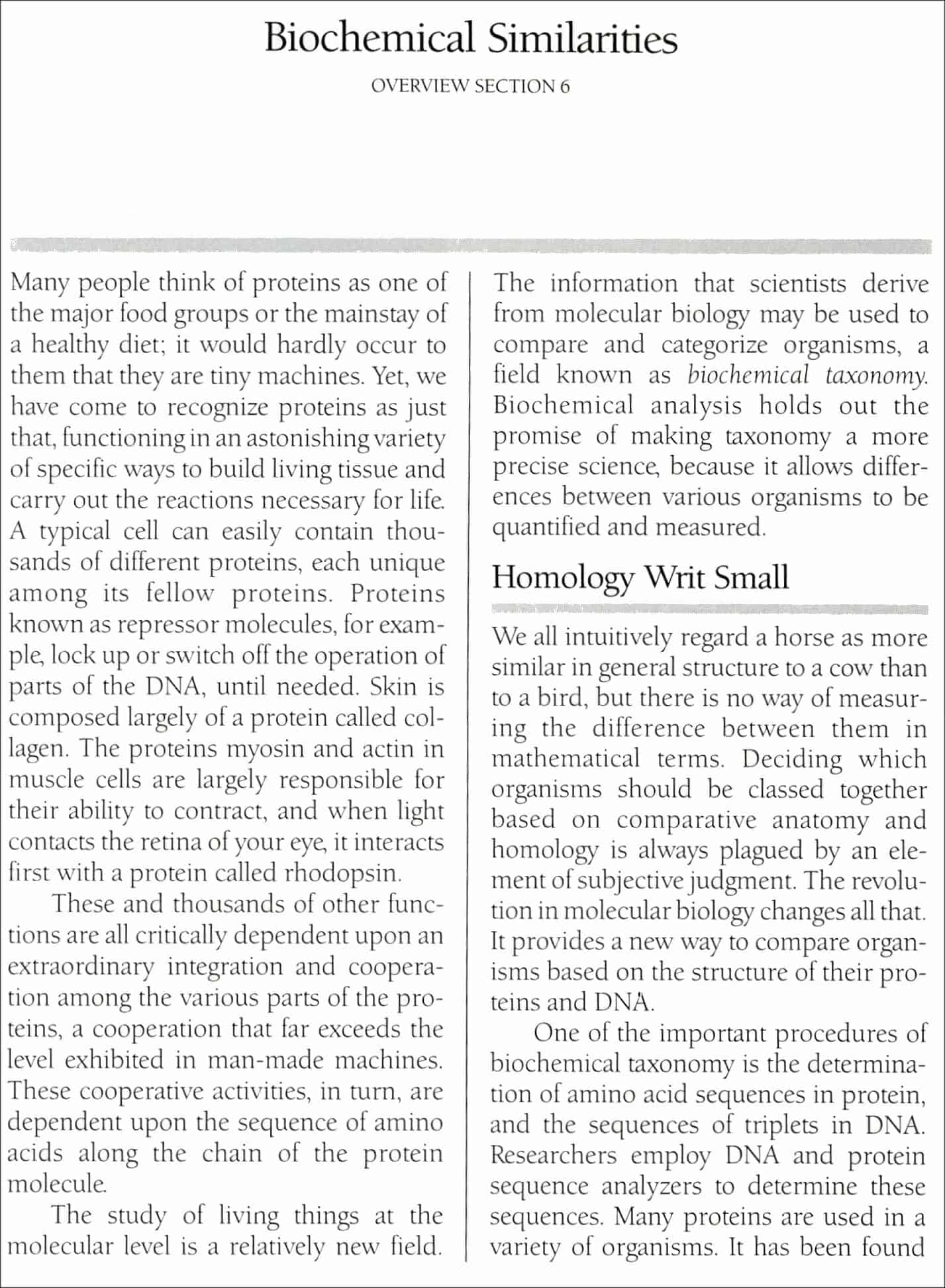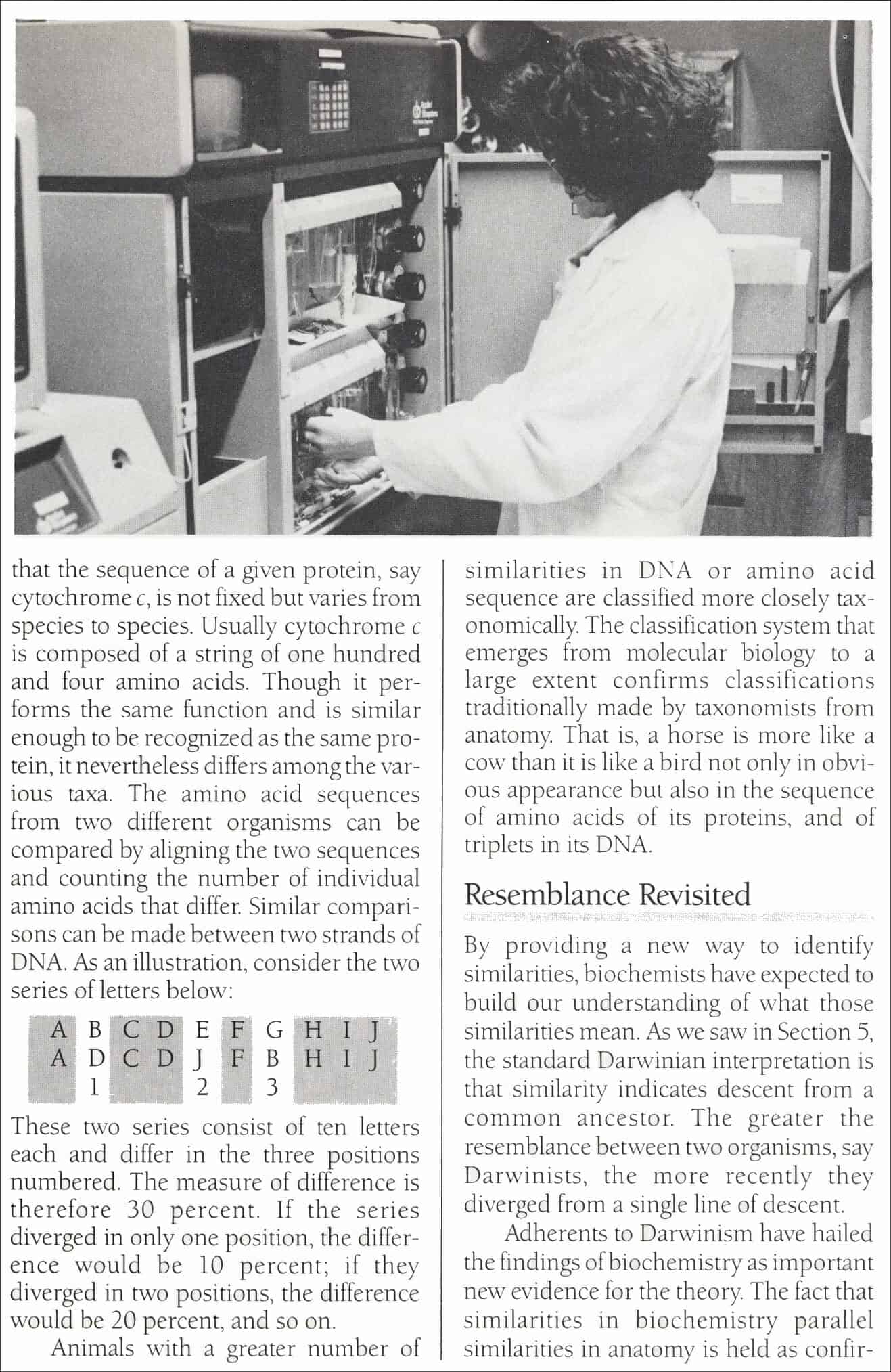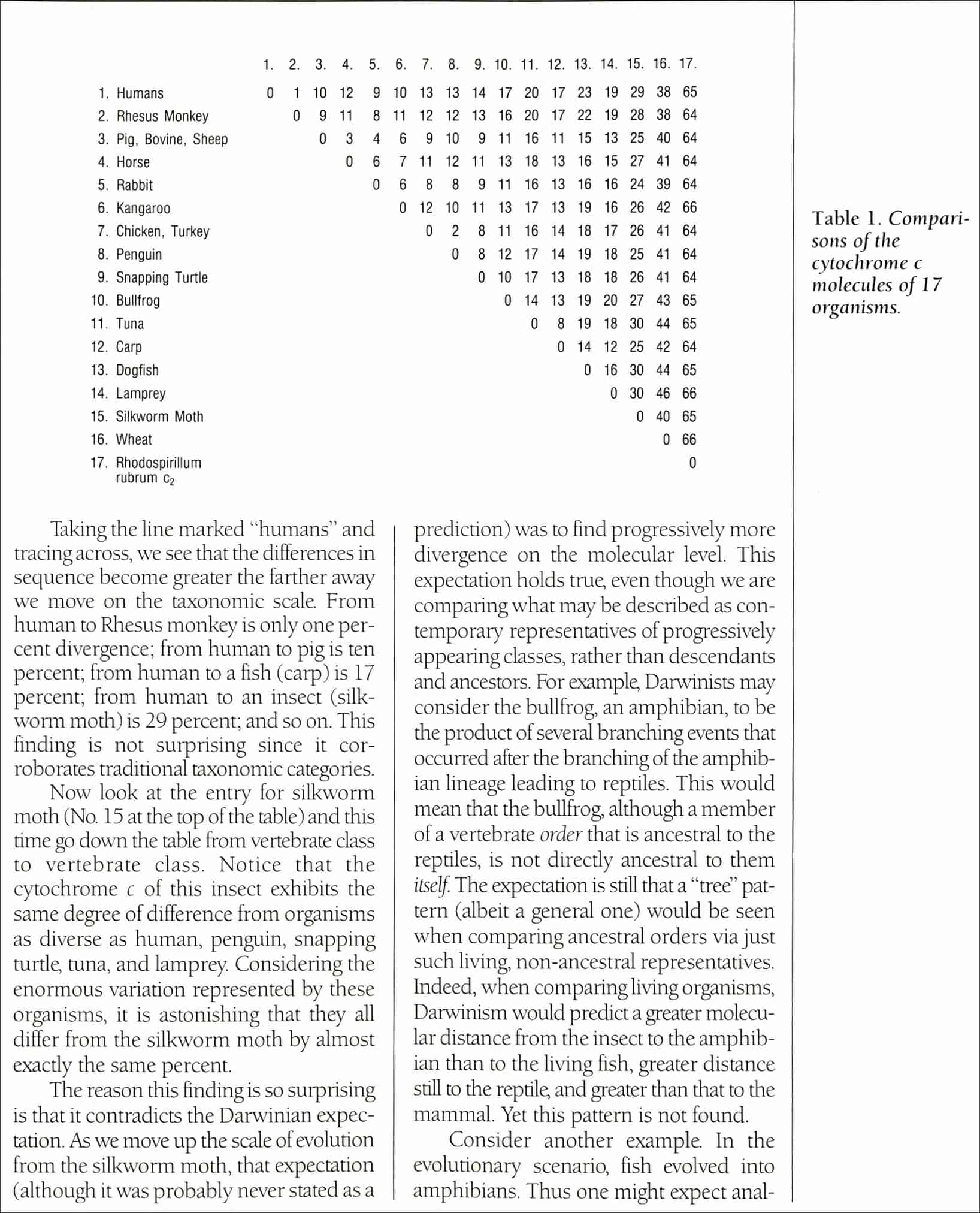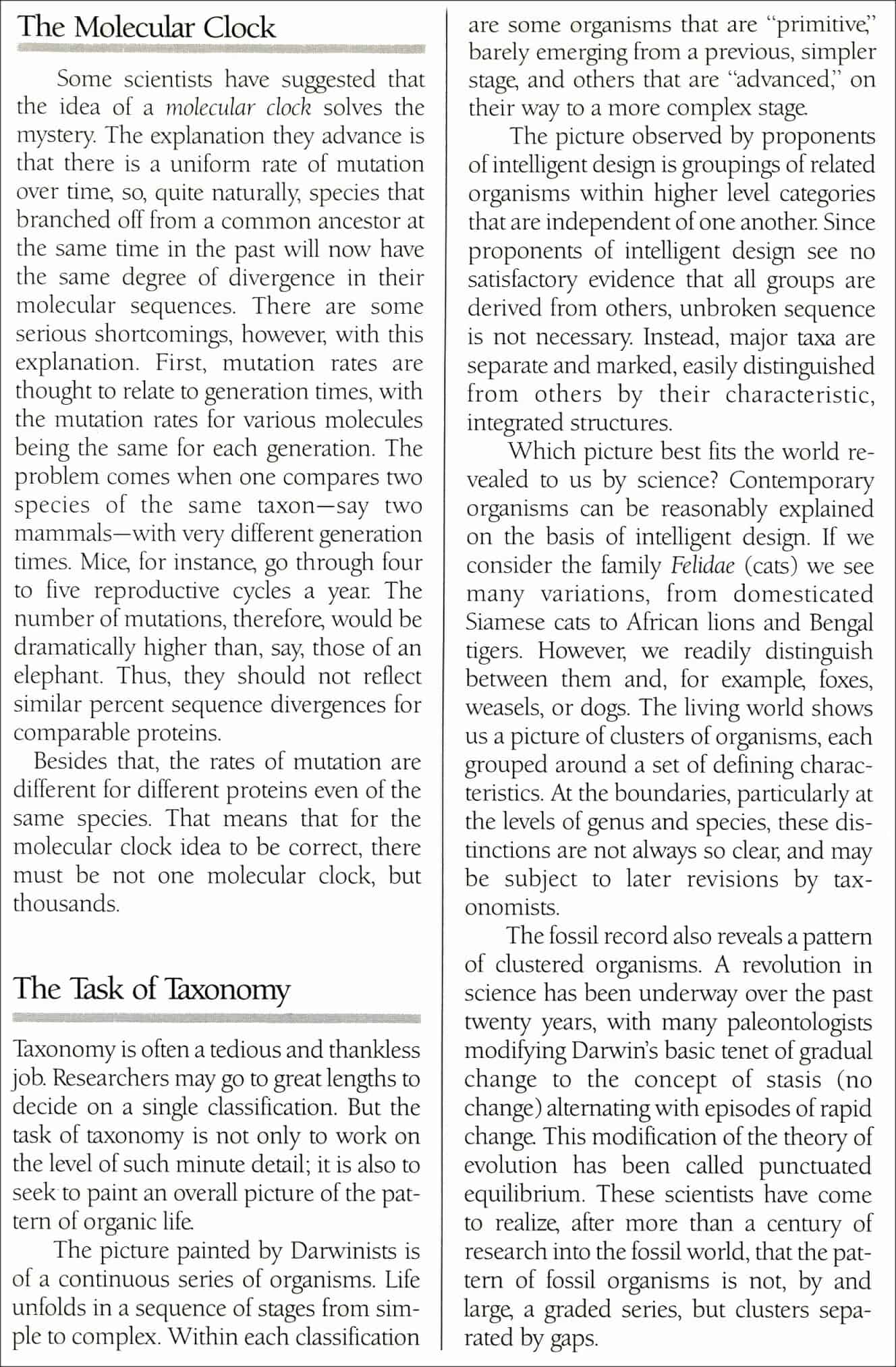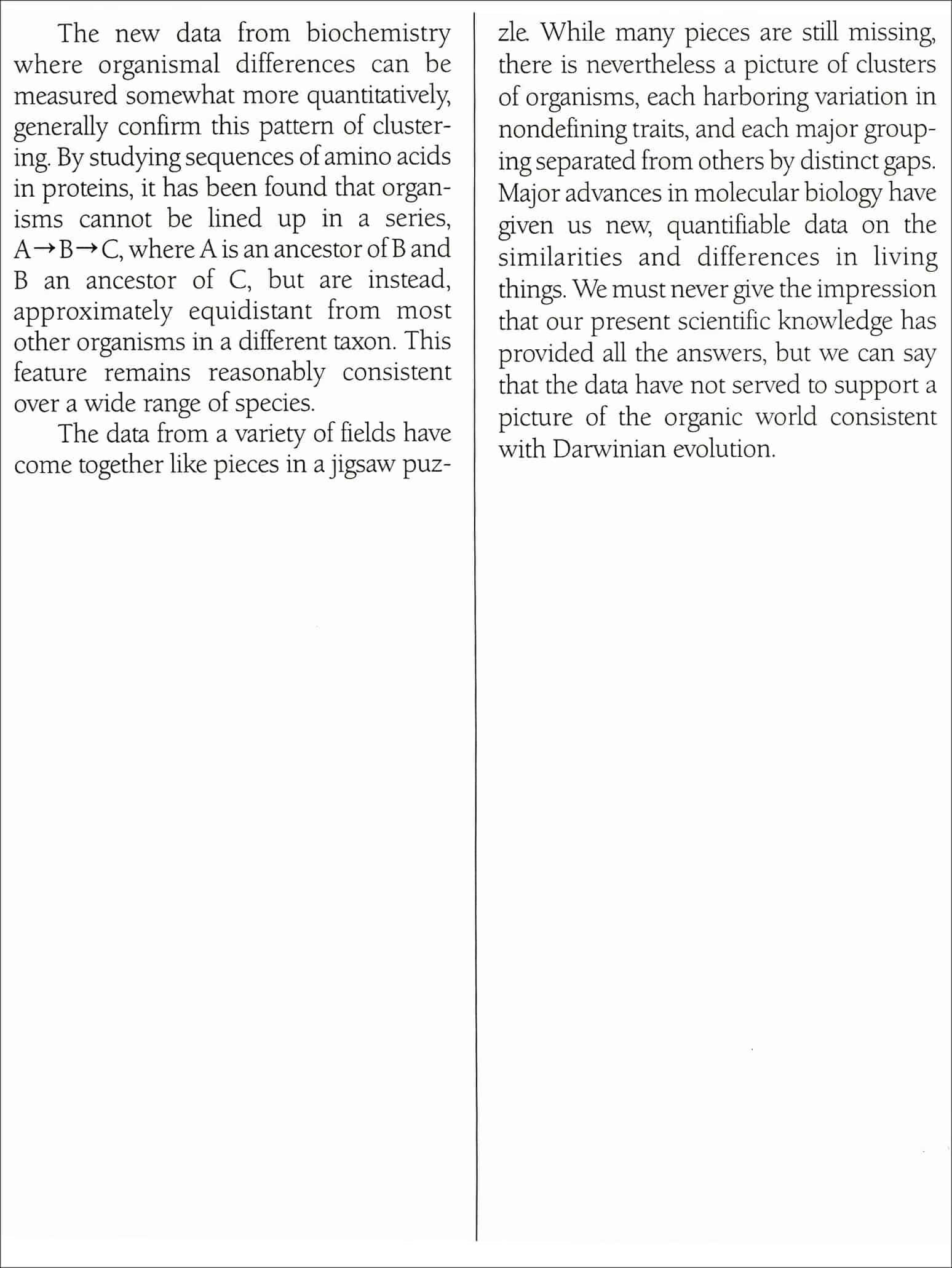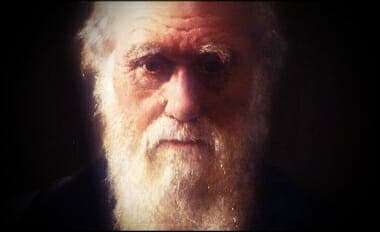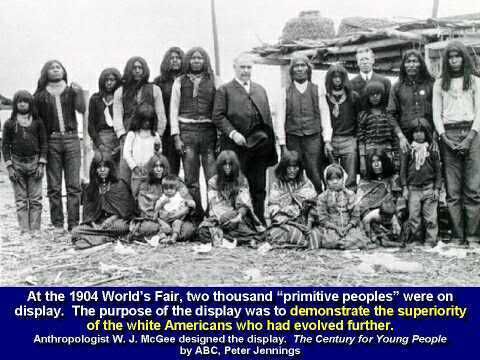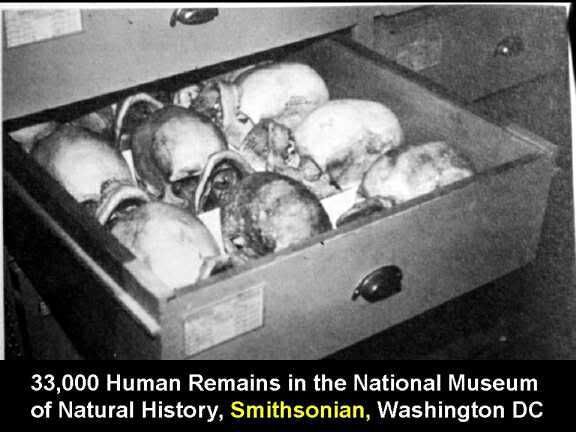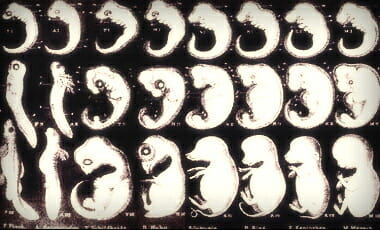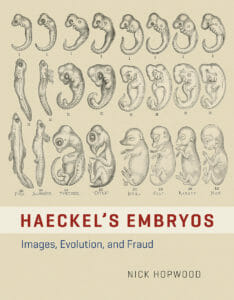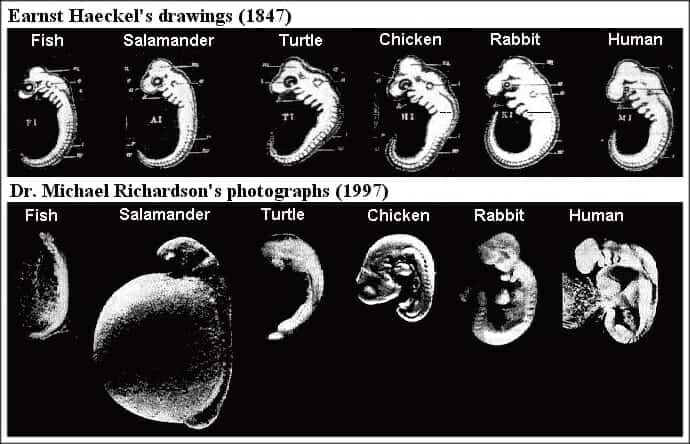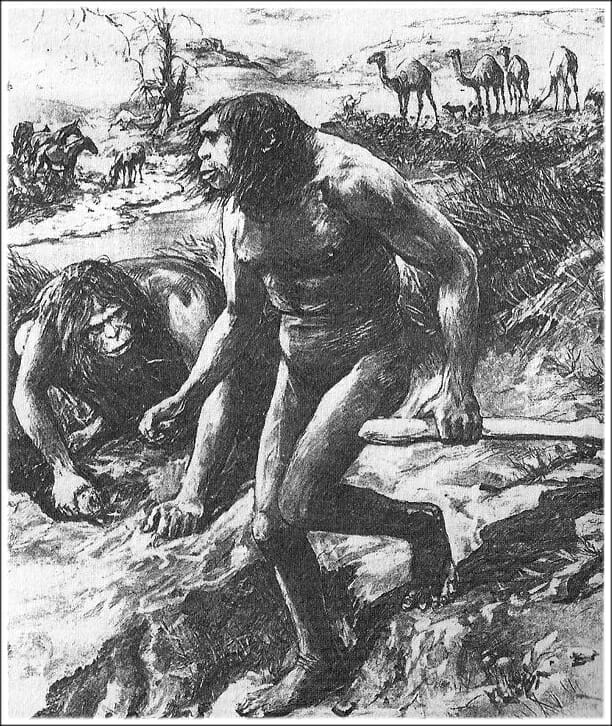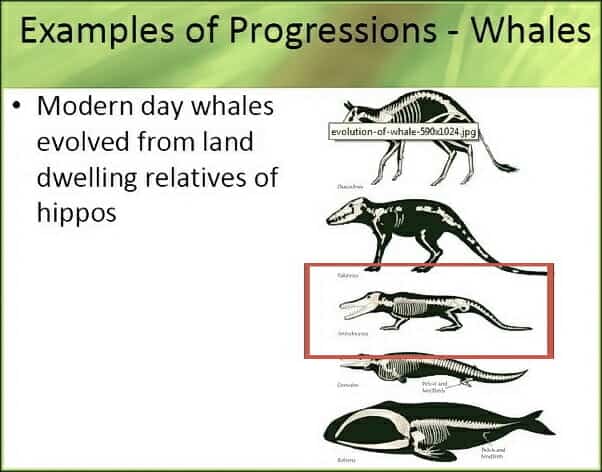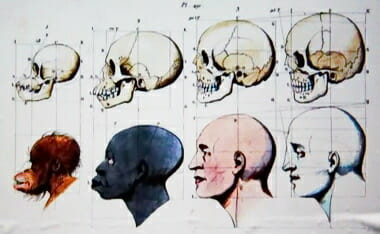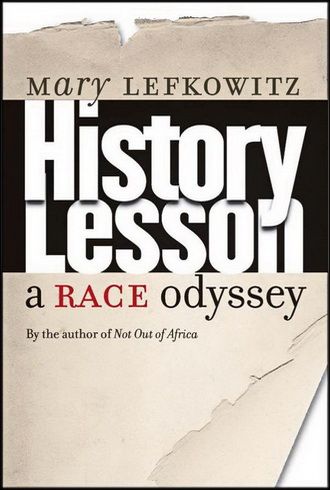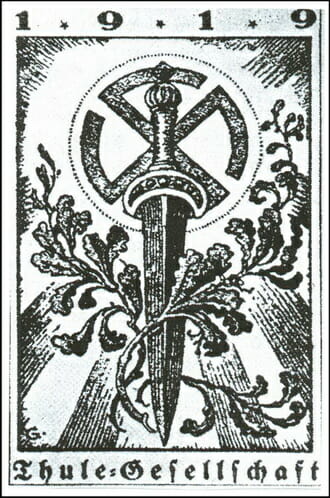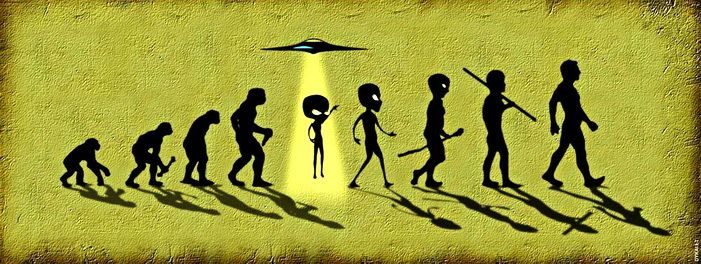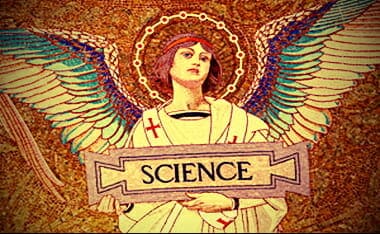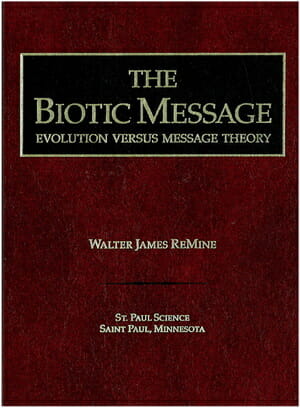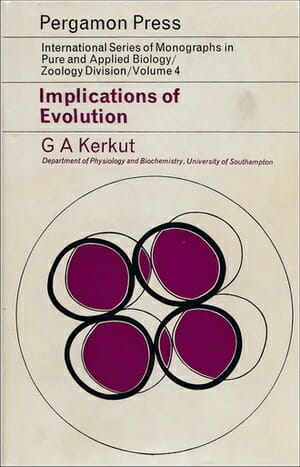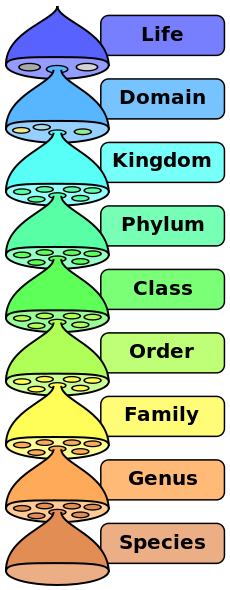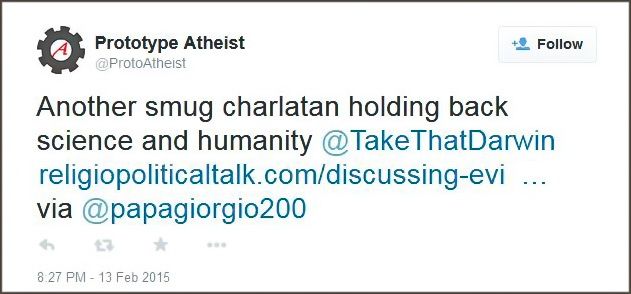 This is simply a transfer to here of some debates I was in over the years on the topic of homosexuality. Like I said I am transferring some of my larger writings/debates/topics to this .com. Here are 5 minor debates (responses) I had on the subject – and keep in mind they are old. I was not referencing well then and some of the links listed may be long dead. Likewise, there really is no bells or whistles… just an import from my Microsoft Word:
This is simply a transfer to here of some debates I was in over the years on the topic of homosexuality. Like I said I am transferring some of my larger writings/debates/topics to this .com. Here are 5 minor debates (responses) I had on the subject – and keep in mind they are old. I was not referencing well then and some of the links listed may be long dead. Likewise, there really is no bells or whistles… just an import from my Microsoft Word:
DEBATE 1
Urobolus, you said,
“Curiously, you chose to leave out the fact that none of the founders meant to include women in their original declaration of equal rights.”
What, my posts aren’t long enough as it is??
New Jersey’s 1790 revision of its voting law dutifully implemented the Constitution’s literal “all inhabitants” by referring to voters as “he or she.” A 1796 law governing voting in federal elections, used the same language: “No person shall be entitled to vote in any township or precinct, than that in which he or she doth both reside…. Every voter shall openly, and in full view, deliver his or her ballot….”
Neither of these laws aroused any particular opposition or controversy.
Let us pause and reflect on what was just put down on the dinner table in front of us. For the first time in history, the women of a political community shared with men the right, stated in public law, to select their rulers. There can be only one explanation of why it happened in the United States at this particular time, and in no other country at any previous time. Most Americans, including the members of the New Jersey legislature, believed in the fundamental principle of the Revolution, that all men [i.e. humankind] are created equal. No other government had ever been grounded on this idea. Women, in fact, voted in the year of the Constitutional Convention. Historian Richard McCormick writes, “A Burlington poll list of 1787 contained the names Iona Curtis and Selveria Lilvey, presumably women.”
The first newspaper discussion of female voting in New Jersey did not occur until 1797, when the Federalist candidate in a hotly contested election to the state legislature was supported (unsuccessfully) by the women of Elizabethtown. In the Adams – Jefferson presidential election of 1800, and in other subsequent elections, women voted in large numbers throughout the state.
The land owning law requirements in some states were so loosely followed that almost all could vote (as we shall see). Still concentrating on Jersey and their Assembly of 1800 which considered a law that would have stated, “the inspectors of elections shall not refuse the vote of any widow or unmarried women of full age [holding no land in other words].” One representative wrote:
“The House unanimously agreed that this section would be clearly within the meaning of the [New Jersey] Constitution, and as the Constitution is the guide of inspectors, it would be entirely useless to insert it into law. The motion was negatived. Our Constitution gives this right to maids or widows, black or white.”
It was later said that the votes of two or three women of color swung the election of a state legislator in 1802.
A close electoral battle between Newark and Elizabeth over location of a new courthouse inspired massive voting fraud on both sides. Women (and of course men) were in the thick of it. “Women and girls, black and white, married and single, with and without qualifications, voted again and again.” This is the episode which became the excuse for an 1807 law that restricted the franchise to free white males. This law directly violated the New Jersey’s constitution, which the courts thereafter dishonestly refused to acknowledge. Ironically, the representative who promoted the new law was the one and only Jeffersonian Republican who had nearly been defeated in 1797 by the federalist women of Elizabeth. This legislator, and the courts, threw out God’s law [created equal] and implemented man’s law.
Women also voted in other states during the founding era as well. Robert Dinkin, a historian of early American voting documents women in Massachusetts towns voting. A New York newspaper reported that “two old widows, tendered, and were admitted to vote.” That was in 1737. Records are sparse, so it is likely that other incidents of female voting occurred in these and other states, both before the Revolution and after. By the time the “amendment” was made to allow all sexes and races to vote, almost all were… without changing or adding a single word to the constitution. Even Wyoming granted the right to vote to women in 1869, again, without an amendment.
Frederick Douglass considered himself to be free? Are you putting words into this great abolitionists mouth? Larry Elder comments in some recent articles that may add to this discussion:
Frederick Douglass, the great abolitionist, born a slave, once offered a lesson in patriotism. In 1859, he fled for his life, accused erroneously of participating in the raid on Harper’s Ferry, along with John Brown.
Director-producer-writer Ron Maxwell (“Gettysburg” and “Gods and Generals”) notes that, in 1860, Douglass spoke in Glasgow, Scotland, where, prior to his address, a radical antislavery leader delivered a scathing attack not just on slavery, but on all things American.
Despite his experience of brutality and dehumanization, Douglass, nevertheless, criticized the previous speaker. “He who stands before a British audience to denounce anything peculiarly American in connection with slavery,” said Douglass, “has a very marked and decided advantage. It is not hard to believe the very worst of any country where a system like slavery has existed for centuries. This feeling towards everything American is very natural and very useful. I refer to it now not to condemn it, but to remind you that it is just possible that this feeling may be carried to too great length.” He gave a detailed analysis of the American Constitution. Despite America’s flaws, Douglass said, America stands unique in comparison to all other nations with its Constitution even with America’s failure to live up to it.
ref: http://www.jewishworldreview.com/cols/elder032703.asp
Founding Father Ben Franklin established the first abolitionist society in Philadelphia in 1787. Speaking to the Pennsylvania Society for Promoting the Abolition of Slavery and the Relief of Free Negroes Unlawfully Held in Bondage, on Nov. 9, 1789, Benjamin Franklin said, “Slavery is such an atrocious debasement of human nature, that its very extirpation, if not performed with solicitous care, may sometimes open a source of serious evils.” In 1790, Franklin petitioned Congress, scolding them about the festering scar of slavery.
William Lloyd Garrison, a white slavery abolitionist, and the editor of the only abolitionist paper to survive 34 years of continuous publication, predicted that “the destiny of the slaves is in the hands of the American women, and complete emancipation can never take place without their cooperation.”
Did the women’s suffragette movement bar men from supporting it? The Declaration of Sentiments, the foundation document of the women’s rights movement, was signed shortly after the first Women’s Rights Convention on July 19 and 20, 1848. Despite the request that only women attend that first day, at least 40 men showed up. Organizers allowed men to vote because, as Elizabeth Cady Stanton’s History of Woman Suffrage suggests, this provided an opportunity for men to make themselves useful. And one man, indeed, proved very useful. All the resolutions were approved until the controversial ninth, calling for women to secure the right to vote. Many attendees — both male and female — denounced it as an outrageous demand that would cheapen the entire cause. Then abolitionist Frederick Douglass spoke, making clear that freedom was not divisible according to sex or color. The resolution passed. One hundred finally signed the Declaration, including 32 men.
ref: http://97.74.65.51/readArticle.aspx?ARTID=18321
You said,
“The 19th century is far behind us, and believe me, the face of America has changed. Just as I said, the founders knew they had to create an open-ended document, because they knew that politics would change and what was applicable in their time would no longer be applicable in two hundred years.”
John Adam’s said the following in an address to the military on Oct. 11, 1798:
“We have no government armed with power capable of contending with human passions unbridled by morality and religion. Avarice, ambition, revenge, or gallantry, would break the strongest cords of our Constitution as a whale goes through a net. Our Constitution was made only for a moral and religious people. It is wholly inadequate to the government of any other.”
You see, the Founders were very intelligent men, and when they created the Constitution, they did so on the hind sight and study of every government up to that point. And they realized one contributing factor that they all agreed on. Man is reprobate. So they configured the Constitution for a people and their worldview (I will post about this after this post). For this republic to survive, they realized that man had to be restrained within this document. Since man doesn’t change, neither should the document that much. And to change it the federal and state governments have a specific process to go through… not the federal judiciary stepping in and reinterpreting the documents intent. This is poli-sci 101.
You speak of “women’s rights,” or “minority rights,” and the like. To which do you refer? The movements today are driven by radicals that have deeper goals in mind, for instance, I did a paper for a friend on feminism, I will post a portion of it here.
Defining Terms
To better understand what modern, or gender feminism means, we must understand what liberal feminism represents. The liberal feminist is not out to second guess what women want; if most women enjoy families, if they enjoy “la difference,” this is of no concern for them. On the other hand, the gender feminist “believes that women constitute an oppressed class within an oppressive system: what ails women cannot be cured by merely achieving equal opportunity. As a class women are seen to be politically at odds with the patriarchy that oppresses them.”[1] Consequently, the gender feminist will never accept the testimonies of ordinary women, since the gender feminist believes that ordinary women have unconsciously bought into a system that oppresses them [2]. Thus, the gender – modern – feminist simply presupposes her worldview [3] and reinterprets all contrary facts as examples of false consciousness. This worldview [4] permeates all that the modern feminist comes into contact with, including such things as history and religion. The gender feminist, then, has a radical perspective. She views social reality in terms of patriarchal “sex/gender system” that, in the words of Sandra Harding, “organizes social life throughout most of recorded history and in every culture today.”[5]
The liberal feminist, on the other hand, merely seeks legal equality for women and equality of opportunity in education and in the work place. It is this type of woman who wants what any classical liberal wants for anyone who suffers bias: fair treatment. The more extreme modern view of feminism is what has been institutionalized, unfortunately, in most of the Women’s Studies programs at the university level.
What’s Going On?
While Concerned Women for America have about 600,000 members, the National Organization of Women (NOW) has dwindled to less than 56,000 members. One of the reasons, I believe, for the resultant loss of a nationally known organization such as NOW, is to be found in the current movements direction. As an example, in the January 1988 National NOW Times, the newsletter for the organization, said: “The simple fact is that every woman must be willing to be identified as a lesbian to be fully feminist.” This may sound extreme, but in fact, this type of radical thinking has more to do with politics than with civil rights and equality. This political movement looks forward to the overthrow of the family unit as well as capitalism. Well-known feminist author and co-founder/editor of Ms Magazine, Gloria Steinem, said the following about feminisms “end game” (if you will): “Overthrowing capitalism is too small for us. We must overthrow the whole… patriarch!” [6]
How, though, can a civil rights movement be interested in capitalism? According to Tammy Bruce, who was the former president of the Los Angeles chapter of NOW as well as being a former member of NOW’s national board of directors puts it: “What Gloria Steinem, Molly Yard, Patricia Ireland and all the rest have presented to you over the last 15 years (at least) has not been feminist theory.” [7]
Ms. Bruce goes on to show that Betty Friedan and Patricia Ireland, ex-president of NOW, (and others) are members of the Communist Party. In fact, Gloria Steinem is honorary chair of the Democratic Socialists of America, which boasts of being the largest socialist organization in the United States and is the principle U. S. affiliate of the Socialist International. Now the political goals become clearer as we understand the intent of these “posers,” as Tammy Bruce calls them [8]. One of the signs of an over oppressive movement is well illustrated in The Animal Farm, by George Orwell. Napoleon, one of the main characters, concerns himself with the education of the young, and forcefully takes two litters of puppies away as soon as they’re weaned, saying he’ll educate them. In effect, the “State,” or those who are in charge raise them.
Now compare this to a statement made by feminist Mary Jo Bane (assistant professor of education at Wellesley College and associate director of the school’s Center for Research on Woman) and the lesson taught in Animal Farm, “In order to raise children with equality, we must take them away from families and communally raise them.” Alternatively, In The Saturday Review of Education [9], Gloria Steinem declared: “By the year 2000 we will, I hope, raise our children to believe in human potential, not God.” NEA president/feminist Catherine Barrett wrote in the same issue:
“Dramatic changes in the way we will raise our children in the year 2000 are indicated, particularly in terms of schooling…We will need to recognize that the so-called basic skills, which currently represent nearly the total effort in elementary schools, will be taught in one-quarter of the present school day…When this happens- and it’s near- the teacher can rise to his true calling. More than a dispenser of information, the teacher will be a conveyor of values…We will be agents of change.” [9a]
Comparisons
A true feminist is a woman who fulfills her potential, like Brenda Feigen, co-founder of Ms Magazine, who exemplifies what the movement had been, with all its promise and enthusiasm. She became the kind of woman the modern feminist couldn’t keep up with! A lawyer, wife and mother, civil-rights activist, politician, Hollywood movie producer, and author… she is a feminist in the true sense of the word. This feminist sounds surprisingly like the one in Proverbs 31:10-31. These sayings are likely a woman writing what the woman’s role is (Lemuel’s mother). The New King James Version opens up verse 10 with, Who can find a virtuous wife?” A better rendering of this verse is “the truly capable woman.” It portrays her exercising responsibility for the provision of food and clothing for the household, and also being involved in managing financial and business affairs outside the house itself. She also cares for the needy, and fulfils a wise teaching ministry. This element of the portrait suggests that, as an authoritative teacher at the end of Proverbs (like Lemuel’s mother in v. 1), she parallels Ms. Wisdom in the opening chapters (i.e., corresponding expressions in 3:13-18; 9:1-6). Woman’s teaching role in the book alongside man’s (e.g., 1:8; 6:20) fulfils part of the vision in Genesis 1-2 of man and woman together representing the image of God and called to exercise authority in the world on God’s behalf.
This is in stark contrast to A Feminist Dictionary [10], whose definitions are self-explanatory:
Male: “… represents a variant of or deviation from the category of female. The first males were mutants… the male sex represents a degeneration and deformity of the female.”
Man: “… an obsolete life form… an ordinary creature who needs to be watched … a contradictory baby-man.”
Testosterone Poisoning: “Until now it has been thought that the level of testosterone in men is normal simply because they have it. But if you consider how abnormal their behavior is, then you are led to the hypothesis that almost all men are suffering from ‘testosterone poisoning.’”
Feminist author Ti-Grace Atkinson shows her true autonomy when stating, “the institution of sexual intercourse is anti-feminist” [11]. Marilyn French, feminist author calls all men rapists: “All men are rapists and that’s all they are. They rape us with their eyes, their laws, and their codes”[12]. Gloria Steinen, feminist extraordinaire, wrote the following about Andrea Dwarkin, a contemporary, “Every century, there are a handful of writers who help the human race to evolve. Andrea is one of them.”[12a] Wow, such high accolades from one of the most well-known activists in the feminist movement, so what does this Andrea Dworkin have to say about us men? “Heterosexual intercourse is the pure, formalized expression of contempt for women’s bodies.” [12b]
Creating Victims
One must keep in mind that when studying comparative theologies through the lenses (e.g., worldview) of modern feminism, that time honored hermeneutics [13] will be subjugated by gender influenced politics. This revisionist goal will not only affect the Bible, and hence Christianity, but also other holy books and religious beliefs. Other presuppositions that drive the modern feminist movement include philosophical naturalism (atheism), and what I call metaphysical naturalism (neo-paganism). Metaphysical naturalism is merely the spiritual movement based partly on the reawakening of “goddess consciousness,” and its real goal is matriarchy, not equality!
The Christian tradition is rich with examples of feminism [14]. The feminism that truly empowers women, not the feminism that makes victicrats [15] out of well meaning woman that wish to make a difference. Christina Hoff Sommers, a liberal feminist and formerly professor of philosophy at Clark University, comments on the current condition of modern feminism:
“The orthodox feminists are so carried away with victimology, with a rhetoric of male-bashing that it’s full of female chauvinists, if you will. Also, women are quite eager to censor, to silence. And what concerns me most as a philosopher is it’s become very anti-intellectual, and I think it poses a serious risk to young women in the universities. Women’s studies classes are increasingly a kind of initiation into the most radical wing, the most intolerant wing, of the feminist movement” [16].
Many true feminists, like Christina, do away with the many myths that are meant to “scare” woman into becoming radicals [17]. Books by feminist Christina Hoff Sommers [18] are good books to refute such myths. Alternatively, the Independent Women’s Forum can be accessed via the Internet [19, 20]. This “backlash” by women against modern feminism is well summed up in a review of the book Feminism Is Not the Story of My Life: How Today’s Feminist Elite Has Lost Touch With the Real Concerns of Women, by Elizabeth Fox-Genovese:
According to historian Elizabeth Fox-Genovese (who describes herself as a feminist), is that most women perceive “official” feminism as indifferent to their deepest concerns. In particular, they are put off by the movement’s negative attitude toward marriage and motherhood, its intolerance for dissent from its most controversial positions, its attacks on men, and its inattention to the practical problems of balancing work and family on a day-to-day basis. Hence the title, echoing a refrain running through the author’s conversations with a diverse sample of women: “Feminism is not the story of my life” [21]
To Conclude
Social commentator and radio show host, Dennis Prager, takes note that males tend to be “rule oriented.” The implication being that Western culture is heavily influenced in the Judeo-Christian standards of moral code. This, he says, is ironic, that, in the name of feminism, women are attempting to emasculate the God of Western religious morality. “For if their goal is achieved, it is women who will suffer most from lawless males” [22]
So long as feminism seeks to adjust the legal position of women to that of man. So long as it seeks to offer her legal and economic freedom to develop and act in accordance with her inclinations, desires, and economic circumstances – so long as it is nothing more than a branch of the great liberal movement, which advocates peaceful and free evolution. When, going beyond this, it attacks the institutions of social life under the impression that it will thus be able to remove natural barriers, it is a spiritual child of socialism. For it is a characteristic of socialism to discover in social institutions the origin of unalterable facts of nature, and to endeavor, by reforming these institutions, to reform nature [22]. No one can deny that, in the course of history, women often found themselves in a subordinate position – though by no means always or in every society. But at the same time, women were protected, and in many an epoch, placed on a pedestal. In any event, the complex and varied role of women through the ages cannot be reduced to a simplistic slogan describing one half of all human beings as “the victims of history.” Those who say so have a quarrel with God, or with nature, or simply with the facts [24].
FootNotes
[1] Christina Hoff Sommers, “Feminism and Philosophy,” APA (American Philosophical Association) Newsletter, 91, no. 1 (Spring 1992), p. 85.
[2] Francis J. Beckwith, Ed., Do the Right Thing: A Philosophical Dialogue on the Moral and Social Issues of Our Time, Jones & Bartlett Publishers, Boston: MA [1996], p. 587.
[3] worldview: People have presuppositions, and they will live more consistently on the basis of these presuppositions than even they themselves may realize. By “presuppositions” we mean the basic way an individual looks at life, his basic worldview, the grid through which he sees the world. Presuppositions rest upon that which a person considers to be the truth of what exists. People’s presuppositions lay a grid for all they bring forth into the external world. Their presuppositions also provide the basis for their values and therefore the basis for their decisions. “As a man thinketh, so he is,” is really profound. An individual is not just the product of the forces around him. He has a mind, an inner world. Then, having thought, a person can bring forth actions into the external world and thus influence it. People are apt to look at the outer theater of action, forgetting the actor who “lives in the mind” and who therefore is the true actor in the external world. The inner thought world determines the outward action. Most people catch their presuppositions from their family and surrounding society the way a child catches measles. But people with more understanding realize that their presuppositions should be chosen after a careful consideration of what worldview is true. When all is done, when all the alternatives have been explored, “not many men are in the room” – that is, although worldviews have many variations, there are not many basic worldviews or presuppositions – Francis A. Schaeffer, How Should We Then Live? The Rise and Decline of Western Thought and Culture, Crossway Books, Wheaton [1976], pp. 19-20.
[4] Ronald H. Nash, Worldviews in Conflict: Choosing Christianity in a World of Ideas, Zondervan, Grand Rapids: MI [1992].
[5] Sandra Harding & Merrill Hintikka, Ed., Discovering Reality: Feminist Perspectives on Science, p. 312 – excerpted from Do the Right Thing, see footnote #55.
[6] http://www.conservapedia.com/Feminism
[7] Tammy Bruce, The New Thought Police: Inside the Left’s Assault on Free Speech and Free Minds, Random House Inc, New York: NY [2001], p. 123
[8] Ibid., p. 142
[9] February 1973
[9a] http://www.changingworldviews.com/quotes/show/12
[10] Edited by Cheris Kramarae & Paula A. Treichler. Feminist Dictionary, University of Illinois Press, Champaign: IL [1986].
[11] Amazon Odyssey p. 86 – http://www.discoverthenetworks.org/LGB.asp
[12] http://www.brainyquote.com/quotes/quotes/m/marilynfre108276.html
[12a] http://www.discoverthenetworks.org/individualProfile.asp?indid=1951
[12b] http://www.conservapedia.com/Feminism
[13] “Traditionally the sub-discipline of theology concerned with the proper interpretation of scriptural texts” C. Stephen Evans, Pocket Dictionary of Apologetics & Philosophy of Religion, InterVarsity Press, Downers Grove: IL [2002].
[14] Helen Kooiman Hosier, 100 Christian Woman Who Changed the 20th Century, Baker Book House, Grand Rapids: MI [2000]; and Rebecca Price Janney, Great Woman in American History, Horizon Books, Camp Hill: PA [1996].
[15] “A victicrat is one who blames all ills, problems, concerns, and unhappiness on others” (Larry Elder, Ten Things You Can’t Say in America, St. Martins, New York: NY [2000], p. 22-33)
[16] Unpublished paper from Clark University
[17] These include some of the following: 1) Myth of the Extent of Anorexia Nervosa; 2) Myth of Amount of Domestic Violence; 3) Myth of Increased Domestic Battery on Super Bowl Sunday; 4) Myth Concerning Percent of Women Raped; 5) Myth Concerning Female Self-esteem; 6) Myth of Discrimination Against Females in School; 7) Myth of Huge Gender Wage Gap, Etc.
[18] Who Stole Feminism: How Woman Have Betrayed Woman, Simon & Schuster, New York: NY [1995]; The War Against Boys: How Misguided Feminism is Harming Our Young Men
[19] http://www.iwf.org/news/010417.shtml
[20] http://www.iwf.org/
[21] http://www.leaderu.com/ftissues/ft9603/reviews/feminism.html
[22] Dennis Prager, Think a Second Time Regan Books, New York: NY [1995], p. 249.
[23] Ludwig von Mises, Socialism, Liberty Fund, Indianapolis: IN [1981], p.87.
[24] Balint Vazsonyi, America’s 30 Years War: Who Is Winning? Regnery Publishing, Washington: D. C. [1998], p. 214
My point is that women’s rights today are not rights at all, but radicalism made politically-correct.
Urobolus, I have never said pluralism shouldn’t be allowed, however, mainstreaming the gay lifestyle isn’t pluralism. Allowing people to do what they wish in the privacy of their home is. When you said, “And believe me, friend, that a state based solely off the laws and values presented in the Bible and allowing no room for change would destroy that,” you are mischaracterizing my argument (straw-man).
Our culture, laws, and societal norms are based in the Judeo-Christian norms. Most of Western civilization is. Our laws [b]are already[/b] based on the Christian norm, for the most part. It isn’t, “what if.” Your example of the KKK is a bad one:
“The KKK will never agree–justifying themselves by certain passages in the Bible–that blacks should be given rights, but in order to live in a stable America, they must accept a median which they do not totally approve of but understand must be kept for the sake of stability in the nation.”
The Bible does not support the contention that the religious movement of the KKK (Christian Identity) give it. In addition, skin color verses whether someone prefers male on male sex, male on multiple people sex, male on animal sex, or a combination of the above, have nothing to do with the civil rights battle of black people. There is no way to prove someone is gay, there is a way to prove a person is black:
Average Household Income:
Homosexuals – $55,430 / African Americans – $12,166
Percentage of College Graduates:
Homosexuals – 60% / African Americans – 5%
Holding Professional Positions:
Homosexuals – 49% / African Americans – 1%
Taken Overseas Vacations:
Homosexuals – 66% / African Americans – 1%
Ever Denied the Right to Vote:
Homosexuals – No / African Americans – Yes
Ever Faced Legal Segregation:
Homosexuals – No / African Americans – Yes
Ever Denied Access to Public Restrooms:
Homosexuals – No / African Americans – Yes
Ever Denied Access to Businesses and Restaurants:
Homosexuals – No / African Americans – Yes
I am going to change speeds a bit and post here a debate I am having elsewhere. So the following posts will be many, but I have already answered most of the inquiries here.
Your comparison of Christian ideals, the one’s the founders used, and that of Islam is like comparing apples and oranges. It comes from a mind that gives equal credence to the vastly different moral systems espoused to the two religious texts. A fault of radical pluralism.
==================================================
DEBATE 1a
Illusion, what I said:
no, I think smoking is foolish but not immoral!
Please re-write your response in lieu of that. Two of my favorite radio talk show hosts are a gay man and the other a gay woman. Al Rantel is on KABC ( http://www.kabc.com/home.asp ) Monday – Friday, 11:00AM – 11:45AM / 6:00PM – 9:00PM, hop on their site and give him a listen. Or how about Tammy Bruce, she’s on Saturday, June 19, 2004 4:00 – 7:00 PM. She also is a prolific author as this bio explains:
Ms. Bruce’s first book, The New Thought Police, was published in October 2001. An analysis of freedom of expression and the culture wars, it explores the importance of freedom of expression and personal liberty and how that liberty is under attack by the dangerous rise of Left-wing McCarthyism. Her current book, The Death of Right and Wrong: Exposing the Left’s Assault on Our Culture and Values, addresses the rise of moral relativism in society and quickly became a New York Times Best Seller.
Two years after joining the National Organization for Women, introducing a brand of feminism that places her somewhere between Donna Reed and Thelma and Louise, Ms. Bruce was elected president of the Los Angeles chapter of NOW at the age of 27. The youngest ever to achieve that position, she doubled the chapter’s membership from 2,000 to 4,000 within a year with issue campaigns that introduced a fresh view of feminist activism. In her seven years as president (1990-1996, the longest continuous tenure in the chapter’s 30 year history) she mobilized activists locally and nationally on a whole range of issues, including women’s image in media, childcare, health care, violence against women, economics, and domestic violence. Ms. Bruce also served two years as a member of the National NOW board of directors.
The funny thing is that these two are telling the homosexual activists to stay out of their bedroom!
Society makes a moral decision to force people who smoke to pay high taxes in order to curb and fund its abuse. In case you didn’t get that, this is a moral decision. All legislation is one group legislating their morality over others. Those who support legalization of homosexual acts or homosexual marriage claim that the rest of society should not impose their morality on them. In effect, and this is key, homosexuals are claiming that it’s morally wrong to impose a code of behavior on them. But as is the case, all laws legislate morality. All laws impose a moral code. In fact, the homosexual activists are trying to do the same thing they say heterosexuals shouldn’t be able to do – impose a morality (or immorality). The difference is that homosexual activists want to impose their morality:
- The implications of homosexual, bisexual, and transgendered curriculum at all levels of education.
- The lowering of the age [12 years old to be exact] of consent for homosexual and heterosexual sex.
- The legalization of homosexual marriages.
- Custody, adoption, and foster-care rights for homosexuals, lesbians, and transgendered people.
- The redefinition of the family to include the full diversity of all family structures.
- The access to all programs of the Boy Scouts of America.
- Affirmative action for homosexuals.
- The inclusion of sex-change operations under a universal health-care plan.
(These goals are taken from the 62 platform demands of the 1993 march on Washington.)
It is ironic that the homosexual activists who tell society to “stay out of the bedroom” are the very ones militantly bringing the bedroom to society. As we can see, homosexuals want much more than tolerance – they want endorsement. Clearly, a position of neutrality (“live and let live”) cannot be taken here. The real question is, “Whose morality should we legislate?” Should we legislate the morality that kills people around the age of forty, or the one that preserves them until seventy-five or eighty? Which is what taxing cigarettes does, it imposes a moral choice that if one smokes they will pay the price.
==================================================
DEBATE 2
John, you said:
This argument is also contradictory. If people have a right to choose then why are you against them choosing homosexuality?
This is the main point. It is a choice… and the reason I am against it is because it is against what nature (and/or God, whichever you prefer) has established as natural. Again, I do not want the government to have the kind of power to regulate the bedroom. However, special interest groups (e.g., homosexuals, polygamists, or people who enjoy sex with animals, etc) should not have “special rights.” A homosexual man has the same civil, and natural law that I do. And if it were genetic, which it isn’t, then this genetic disposition should be resisted. As, it would still be in the best interest of society (every society throughout history – whether secular or religious). And I have shown that debauchery – homosexuality included – was part of the downfall of the Roman Empire, specifically. A society that you rightly pointed out was a model (one of the many the Founders used) for our society. So you should take seriously these points I have made.
Homosexuality will always be in the minority, because the gay person does not reproduce like the heterosexual couple. A very funny point was made at a debate between John Massimo Pigliucci, an atheist debating William Lane Craig, a theist. The student asked this of the atheist:
“Since women that believe in God are less likely to have abortions, does that mean that natural selection will result in a greater number of believers than non-believers.”
Your response to my concerns about the health in general is a bad one John. For instance, you response to my smoking analogy missed the point. The schools should also talk of the dangers of the homosexual lifestyle with the students. Which I showed is very drastically shorter than the heterosexual lifestyle, or, for that matter, the smoker’s life expectancy. And sodomy is equally illegal for both the homosexual as well as the heterosexual in those states that have sodomy laws. again, the government should not have this power over a persons private life. We are agreed on this.
John you said, “This argument is also a fallacy: Argument of Authority. Just because the founding fathers disproved of it does not make it wrong.” I agree, this is an argument from authority. I am a firm believer that the founders understood the meaning and application better than any of the law professors who haggle over this or that. Original Intent is the standard I live by. And with the plethora of writings by the founders, we can easily understand this original intent. It is illegal because the normalization of the act of sodomy was well known as one of the reasons for many governments turn towards dissolution. The founders were students of history and Natural Law as founded in the Judeo-Christian ethic.
Homosexuals have the same marriage rights, as do my wife or I. Not only that, but also many homosexuals do not want the spotlight put on their lifestyle. They were doing just fine in their respective privacy of their own home. A very small – radical – minority is the voice for this change.
When you said:
“Democracies are not just about the right to affect politics and the economy, they are also about the right of freedom to spirituality and personal freedoms. Homosexuals may not get married. That infringes on their right to personal freedoms.”
Thank God we are not a democracy! And that a moral ethic is implied in our social order via laws. All your arguments you are using for gay-marriages can be used for polygamous marriages and bestiality.
Same-sex marriage proponents defend their position by arguing that government neutrality is violated when the state allows only people of different genders to marry one another. Yet the same-sex marriage position is far from neutral. It asserts that government ought to prefer a view of human nature that sees human institutions, such as marriage and the family, as artificial social constructions ruled by personal subjective preference. Because proponents of this view try to establish marriage on the basis of adult consent and desire rather than on marriage’s intrinsic value and the natural teleology (purpose) of the body (or person), numerous counterintuitive and irrational consequences result.
Although the original mission of the homosexual rights movement called for social tolerance rather than social approval, it is now demanding the latter.
From: http://www.equip.org/articles/the-same-sex-marriage-debate
==================================================
DEBATE 3
John (and others), you said:
I have stated over again that homosexuality is found in animals. You have said that homosexuality can only be chosen by rational beings. So, either homosexuality is rational, or animals are rational beings equal to humans. Which one?
This Is an area that I wish to focus on for now. We have plenty of time to deal with the other issue herein. Sodomy in nature is the subject, and the comparing of our human species to other species in the animal kingdom. This deals with inherent, existential meaning to humanness, as you will see, I cover this part in-depth… somewhat.
Firstly, the term homosexuality should be limited to the human species, for in animals the investigator can ascertain only motor behavior. As soon as he interprets the animal’s motivation he is applying human psychodynamics–a risky, if not foolhardy scientific approach.
Secondly, assumptions as to the origin of human homosexuality cannot be based on the study of genes, hypothalamus, anterior commissure, or the lower brain structures, or species such as the drosophila fly, or even lower primates; because in man the enormous evolutionary development of the cerebral cortex has made motivation–both conscious and unconscious–of overwhelming central significance in sexual patterning and sexual-object choice. Below the level of chimpanzee, sexual arousal patterns are completely automatic and reflexive.
One of the most outstanding experts in animal behavior, Beach (1942, 1947), the eminent ethologist, made comparative studies of sexual development during the evolution of the vertebrates and made a stunning discovery. He found that in lower vertebrates, sex is an almost automatic activity, a self-regulatory sequence of events.
In the course of development, the stereotyped pattern breaks down during encephalization; that is, the machinery of copulation becomes less and less automatic and depends more and more on the individual animal’s experience. At the level of the chimpanzee, he found only three automatic mechanisms remaining–erection, pelvic thrust, and orgasm. With these three items, man builds a sexual pattern with his own cerebral cortex.
What follows from this discovery is: (1) that there is no innate desire for the same or opposite sex partner; (2) that the answer to the question of modified sexual arousal patterns, i.e., sexual orientation, is a question of man’s ontogenetic development; (3) that in the training of children we could undoubtedly teach them to respond orgastically to any kind of stimulus, but for obvious reasons this is neither feasible nor desirable, and (4) that wish-fulfillment, memory, and fantasy play a large role in the formation of sexual patterns in man.
In man, therefore, the development of the cerebral cortex and the lessening of the role played by spinal reflexes, hypothalamic structures, and automatic mechanisms leave motivation at center stage for the development of both standard sexual patterns and their disturbances and/or modified sexual patterns (the sexual deviations, i.e., homosexuality, fetishism, transvestitism, etc.).
In man, heterosexual object choice is neither innate nor instinctual; neither is homosexual object choice or any other perverse behavior–all are learned. The choice of sexual object is not predetermined by chromosomal tagging or hypothalamic functioning. However, most significantly, heterosexual functioning is outlined from birth by anatomy and then reinforced by cultural and environmental indoctrination and buttressed–until recently–by a social system of rewards and punishments. It is supported by universal human concepts of mating and the tradition of the family unit, together with a complementarity between the two sexes. The term anatomically outlined does not mean that it is instinctual to choose a person of the opposite sex. The human being, however, is a biologically emerged entity derived from evolution, favoring survival.
Those who stress a basic innate, biological tendency toward heterosexuality can make the same error as advocates of the theory of constitutional bisexuality or homosexuality. As the noted psychoanalyst Rado (1956), former professor of psychoanalysis (Columbia University P. and S.) stated: “In both lines of experimental study, the empirical evidence points to the same conclusion: the human male and female do not inherit an organized neurohormonal machinery of courtship and mating. Nor do they inherit any organized component mechanism that would–or could–deliver them to such goals as mating or choice of mate… Each of the sexes has an innate capacity for learning, and is equipped with a specific power plant and tools. But in sharp contrast to the lower vertebrates and as a consequence of the encephalization of certain functions first organized at lower evolutionary levels in the central nervous system, they inherit no organized information.”
As psychoanalysts and psychotherapists, we are treating obligatory homosexuality successfully, changing sexual orientation from homosexual to heterosexual. Such a change would be unthinkable if there were any truth at all to the organic or biological or hereditary causation of homosexuality. Lastly, it is not a kindness to homosexuals and their families to attribute their serious disturbance in psychosexual development to organicity. It dooms them to a life which is extraterritorial to the biological and social realities which surround them.
- Charles W. Socarides, M.D. — Clinical Professor of Psychiatry at Albert Einstein College of Medicine — Author of, The Overt Homosexual (1968), Homosexuality (1978), The Preoedipal Origins and Psychoanalytic Therapy of Sexual Perversions (1988), A Freedom Too Far (1995)
Does that clear up choice in humans versus erection and ejaculation in animals? With humans, it is a choice, and is against Natural Law. If you understand natural law (I recommend In Defense of Natural Law, by Robert P. George; and, Written on the Heart: The Case for Natural Law, by J. Budziszewski), you will understand that comparing animal erection and ejaculation is quite different than human choice… as the above article clearly shows. It is a category mistake. Not to mention that nowhere in nature does homosexuality reach the “five” level on the Kinsey scale.
Not only that, but you are in some sense of the thought saying:
- Corruption of reason by evil disposition of nature: A defect in my chromosomes predisposes me to violence, abuse of alcohol or homosexual acts. Although I am still capable of restraint, it is more difficult for me than it might be for someone else.
- Corruption of reason by vicious custom: I have grown up around people who do not regard bribery as wrong, and so I take it for granted.
These are alluded to by you. Other lines of arguments that appear to come up is that if homosexuality is found naturally in nature, hence, in the human population it should be considered “natural,” the this should apply to all animal / human behavior. The “dog-eat-dog” world, if you will. I don’t believe you would consider killing a 6-month old baby as natural, would you?
You keep bringing up religion, so I will hit this head on. Natural Law only is effective if there is an Ultimate, personal Being that has created us. This is how the founders could write and sign the Declaration of Independence and the Constitution. They knew that everyone deserved these freedoms. However, if you reject this Ultimate, who’s to say that infanticide is morally wrong, or homosexuality, for example:
Steven Pinker, professor of psychology at the Massachusetts Institute of Psychology and a leading popularizer of evolutionary psychology, says it is a genetic imperative. Writing in the New York Times, Pinker argued that what he termed neonaticide is not attributable to mental illness because “it has been practiced and acceptable in most cultures throughout history.” Rather, he went on to say, a capacity for neonaticide is hard-wired into the maternal genes by our evolutionary history.
Or take these excerpts from the book, Writings on an Ethical Life, by Peter Singer (the Ira W. De Camp Professor of Bioethics at Princeton University’s Center for Human Value). I am curious if you agree with him or not?:
“We have already seen that the strength of the conservative position lies in the difficulty liberals have in pointing to a morally significant line of demarcation between an embryo and a newborn baby. The standard liberal position needs to be able to point to some such line, because liberals usually hold that it is permissible to kill an embryo or fetus [all nine-months an abortion is legal] but not a baby. I have argued that the life of a fetus (and even more plainly, of an embryo) is of no greater value than the life of a nonhuman animal at a similar level of rationality, self-consciousness, awareness, capacity to feel, etc., and that since no fetus is a person no fetus has the same claim to life as a person. Now it must be admitted that these arguments apply to the newborn baby as much as to the fetus. A week-old baby is not a rational and self-conscious being, and there are many nonhuman animals whose rationality, self-consciousness, awareness, capacity to feel, and so on, exceed that of a human baby a week or month old. If the fetus does not have the same claim to life as a person, it appears that the newborn baby does not either, and the life of a newborn baby is of less value to it than the life of a pig, a dog, or a chimpanzee is to a nonhuman animal. Thus while my position on the status of fetal life may be acceptable to many, the implications of this position for the status of newborn life are at odds with the virtually unchallenged assumption that the life of a newborn baby is as sacrosanct as that of an adult.” (p. 160-161)
“In our book Should the Baby Live? my colleague Helga Kuhse and I suggested that a period of twenty-eight days after birth might be allowed before an infant is accepted as having the same right to life as others. This is clearly well before the infant could have a sense of its own existence over time, and would allow a couple to decide that it is better not to continue with a life that has begun very badly.” (p. 231)
Would you agree with Pinker’s and Singer’s statements? Is infanticide morally wrong? Or just culturally wrong, and nor really morally wrong? You are equating animal sexual behavior to that of human, much like Pinker and Singer.
Another conundrum is this one pointed out by a political science analyst, “If homosexuality is really genetic, we may soon be able to tell if a fetus is predisposed to homosexuality, in which case many parents might choose to abort it. Will gay rights activists continue to support abortion rights if this occurs?” (The Liberal Contradiction, by Dale Berryhill). Don’t you see how this whole enterprise you have leapt into actually cheapens the homosexual’s life? It creates a science of eugenics, and the homosexual will actively feel as if he or she is a genetic mutation rather than a human. Christianity and psychology offers a human (and humane) response to today’s cultural hedonism, not eugenics.
I have argued that homosexual acts cause many health problems, providing proof that it is against what nature has intended for the human species, hence, against natural law, and Natural Law. Again, anal intercourse is harmful to the receptive partner. The rectal sphincter is designed to stretch only minimally, penile-anal thrusting can and does damage it severely. “fisting” is also a common practice in the homosexual community (and a smaller part of the heterosexual community), this causes worse damage. Thus, gay males have a disproportionate incidence of acute rectal trauma as well as of rectal incontinence (the inability to control the passing of feces) (A.J. Miles, T. G. Allen-Mersh, and C. Wastell, “Effect of Anoreceptive Intercourse on Anorectal Function,” Journal of the Royal Society of Medicine 86, no. 3 [March 1993), pp. 144-147), and anal cancer (C. Fenger, “Anal Neoplasia and Its Precursors: Facts and Controversies,” Seminars in Diagnostic Pathology 8, no. 3 (August 1991), pp. 190-201; J. R. Dalling , “Sexual Practices, Sexually Transmitted Diseases, and the Incidence of Anal Cancer,” New England Journal of Medicine 317, no. 16 (15 October 1987), pp. 973-977; I could list more if you wish).
“Anal tissue is traumatized because it is designed for relatively soft fecal mass as it is prepared for expulsion by the slow contractions of the bowel and are nowhere near as sturdy as vaginal tissue. As a consequence, the lining of the rectum is almost always traumatized to some degree by any act of anal intercourse. Even in the absence of major trauma, minor or microscopic tears in the rectal lining allow for immediate contamination and entry of germs into the bloodstream. Although relatively monogamous gay couples are at lower risk for AIDS, the tend to engage in unprotected anal intercourse more frequently than do highly polygamous single homosexuals. As a result, they are at a higher risk for non-AIDS conditions – if all other factors are equal, which is usually not the case because of the clustering of risk factors. Because receptive anal intercourse is so much more frequent among homosexual men than among women, the dangers of this kind of sex are amplified among homosexuals. Furthermore, comparable tears in the vagina are not only less frequent because of the relative toughness of the vaginal lining, but the environment of the vagina is vastly cleaner than that of the rectum. Indeed, we are designed with a nearly impenetrable barrier between the bloodstream and the extraordinary toxic and infectious contents of the bowel. Anal intercourse creates a breach in this barrier for the receptive partner, whether or not the insertive partner is wearing a condom.” (Jeffrey Satinover, M.D., Homosexuality and the Politics of Truth, pp.66-67)
The above quote is from the book that the Congressional Record called, “The best book on homosexuality written in our lifetime…”
Nature tells us in very succinct ways that the act of sodomy should not be “normalized” – in that the homosexual lifestyle should be accepted as a normal and healthy alternative. It puts an undue strain on our health care system now, but if same sex-marriages are allowed, more of our tax dollars will go to curbing health issues that are easily solved by abstaining from them. Death, as I pointed out earlier, between these monogamous non-AIDS couples are in their early forties. Whereas the heterosexual couple lives into their seventies. This is a powerful example of nature benefiting the “normal” acts between human species. If a monkey from Southeast-Asia practices sodomy, thus shortening his lifespan by almost half, what is it to us? If a human shortens his lifespan by almost half, and that first half is lived by constantly having to deal with taxpayer funded health issues, then it is of importance to us. Not to mention the quality endowed in the human life that is existential, and not merely determined by nature. If you take away the intrinsic value of human life as part of your argument John, you are stuck with defending all sorts of paradigms that are ultimately opinion, and based in only that (as Pinker and Singer showed quite eloquently).
==================================================
DEBATE 4
John,
You brought up an interesting point about how one could satisfy their partner. Probably your best point made… I think (and the action that would show true love if two men were truly in love with each other and wanted their life-partner to have a long and healthy life). I am a believer in conservatism, not just the political ideology, but in how we should make choices about moral issues. For instance – and I only use this as an example, not for debate – in 1973 the Supreme Court made abortion legal (Roe v. Wade) in all nine-months (Doe v. Bolton). They did so for a few specific reasons. One was that Roe (Norma McCorvey) was gang-raped, this turned out to be a lie. Another reason was the belief that the embryo goes through evolutionary “stages” during growth in its earlier stages (from a salamander, through a pig, and chicken type stage – for example). This idea was based on Ernst Haeckel’s “ontogeny recapitulates phylogeny,” whose fraud is documented (with photo’s) in the attached paper. The below quote is from a debate between a creation scientist and an evolutionary professor/scientist.
Dr. Duane Gish made this point in a debate with famous anthropologist professor Ashley Montagu (April 12, 1980) at Princeton University:
- Dr. Gish said: “Years and years of embryological research was essentially wasted because people, convinced of the theory of evolution and that embryos recapitulated their evolutionary ancestry, spent much of their time in embryological research trying to develop phylogenies based on the data of embryology. As I mentioned earlier, embryologists have abandoned the theory of embryological recapitulation. They don’t believe it. They know its not true…. It produced bad research rather than the good research that should have been done.”
- Dr. Montagu replied: “The theory of recapitulation was destroyed in 1921 by Professor Walter Garstand in a famous paper, since when no respectable biologist has ever used the theory of recapitulation, because it was utterly unsound, created by a Nazi-like preacher named Haeckel.”
- Dr. Gish: “Ladies and gentlemen, I have travelled all over the world. I have debated and lectured on many, many major university campuses, and it is hardly a single university campus that I appear on that some student does not tell me that he is taught the theory of embryological recapitulation right there at that university. I’ve had many evolutionists argue the evidence for evolution from embryological recapitulation. Unfortunately, as Dr. Montagu has said, it is a thoroughly discredited theory, but it is still taught in most biology textbooks and in most universities and school as evidence for evolution.”
- Dr. Montagu: “Well ladies and gentlemen, that only goes to show that many so-called educational institutions, called universities, are not educational institutions at all or universities; they are institutes for mis-education.”Princeton, at this time (where this debate took place in 1980), taught and used textbooks that showed recapitulation to be true (even though more than a hundred years earlier it was shown to be a fraud). Which I’m sure was very comforting for parents who were forking out multiple thousands for their sons or daughters education only to find that Princeton is an institute for mis-education.
This important, specific reference by the Supreme Court was also wrong. The third are where the Court practiced the long lost art form of CYA (cover your ass) was when they said that no one knows for sure when life begins, therefore, they left it up to the mother to decide. This is where I would personally practice conservatism.
If a hunter is uncertain whether a movement in the brush is caused by a person, does his uncertainty lead him to fire or not to fire? If you’re driving at night and you think the dark figure ahead on the road may be a child, but it may be just a shadow of a tree, do you drive into it or do you put on the brakes? If we find someone who may be dead or alive, but we’re not sure, what is the best policy? To assume he is alive and try to save him, or to assume he is dead and walk away?
Shouldn’t we give the benefit of the doubt to life? Otherwise we are saying, “This may or may not be a child, therefore it’s all right to destroy it.”
I would say that even though Clinton says he never penetrated Miss Lewinksey, he none-the-less performed oral sex with her, and stuck a Cuban cigar up her sphincter area, I would say, on a moral plain for the norms of society, that this was below what our society should shoot for.
Applying this to your example is tough. If homosexuals could only do oral sex, or the like, so be it… I would still be against legalizing gay marriage, however, the impact on society would be greatly reduced, and I am sure that the gay lifestyle would be less frequented in our headlines and medical journals. This is a plus for the privacy issue of the gay man or woman.
This being said, the gay lifestyle is the epitome of hedonism. The nature of men and sex, unrestrained, is one of unbridled “passion.” in fact, women, via courting and marriage, are one of the biggest factors in raining in our passions. Not only that, but Western civilization adopted the Judeo-Christian ethic of one woman and one man making a marriage for life. This is where my conservatism comes out again.
Homosexuality is one of the most crucial issues we all must consider. At the personal level most of us know at least one of our friends, colleagues, or fellow-Americans who is dying the terrible death of AIDS. At a cultural level one most revealing indexes of a civilization is the way it orders human sexuality.
- (Before I continue with this quote, I must respond to anyone who believes I am uncompassionate towards any who suffer any genetic or choice lifestyles. When a philosopher speaks of whether rape is morally wrong or not morally wrong, he is of course compassionate towards the victim of the act. However, the philosopher or politician is discussing the issue itself, asking deeper questions that if the individual him or herself is hurt, but rather if the act is wrong. Thus the philosopher may sound uncompassionate, but is merely dealing with the raw facts of the situation.)
When left to itself, human sexuality appears unconstrained and to the innocent mind shockingly polymorphous (meaning: having, assuming, or passing through many or various forms, stages, or the like). But the hallmark of a society in which all sexual constraints have been set aside is that finally it sanctions homosexuality as well. This point is hotly disputed today, but is reflected in the wisdom of the ages. Plutarch, the first-century Greek moralist, saw libertinism to be the third and the next-to-last stage in the life-cycle of a free republic before its final descent into tyranny. Edward Gibbon (The Decline and Fall of The Roman Empire)in eighteenth century England understood this principle with respect to ancient Rome, but from a historians point of view. Sigmund Freud emphasized the same principle with respect to many cultures in the West – – although from a radically secular psychoanalytic perspective. For him, universal sexual repression was the price of civilization. Without constraints civilization would lose its discipline and vitality. And of course, the Bible repeatedly shows the effects of unconstrained sexuality, such as its stories of the rise and fall of Sodom, Gomorrah, and indeed Israel itself.
Dennis Prager, a reform Jewish cultural commentator, writes:
“Man’s nature, undisciplined by values, will allow sex to dominate his life and the life of society…. It is not overstated to say that the Torah’s prohibition of non-marital sex made the creation of Western civilization possible. Societies that did not place boundaries around sexuality were stymied in their development. The subsequent dominance of the Western world can, to a significant extent, be attributed to the to the sexual revolution, initiated by Judaism and later carried forward by Christianity.”
In sum, it is a simple and sobering fact that no society that has sanctioned unconstrained sexuality has long survived.
The typical homosexual is a man who has frequent episodes of anal intercourse with other men, often with many different men. These episodes are 13 times more frequent than heterosexuals’ acts of anal intercourse (which is still showing disregard and unconstrained hedonism towards a mans wife or girlfriend), with twelve times as many different partners as heterosexuals. These statistics are quite conservative. The most rigorous single study – the Multicenter AIDS Cohort Study – recruited nearly five thousand homosexual men and found that about 80 percent had over 50 sexual partners in their lifetime. The book, The Male Couple, was researched and written by a homosexual couple, out of the 156 couples they studied, only seven maintained sexual fidelity. Of the hundred couples that had been together five years, none had been able to maintain sexual fidelity. The authors noted that “The expectation for outside sexual activity was the rule for male couples and the exception for heterosexuals” (p. 3). A 1981 study revealed that only two percent of homosexuals were monogamous or semi-monogamous – generously defined as ten or fewer lifetime partners. And a 1978 study found that 43 percent of male homosexuals estimated having sex with five hundred or more different partners (A. P. Bell, Sexual Preference [Indiana University Press]). Seventy-nine percent said that more than half of these partners were strangers and 70 percent said that more than half were men with whom they had sex only once (A. P. Bell and M. S. Weinberg, Homosexualities: A Study of Diversity among Men and Woman [Simon & Schuster]).
So while I would agree with you that the homosexual man could satisfy his partner without penetration, this just doesn’t happen. Nor would I support the normalization of even these acts in our society, as my conservative values seep out for keeping our society bent towards the family unit, which is the backbone of a healthy society. I don’t just say this; history proves my point for me.
Much thought, SeanG
P.S. – You said: “None other than religion. Religion is the only definitive argument against it.” This is not true. I have already shown the health hazards of this lifestyle; the result is an unduly large strain on society. I have pointed you to some books by historians that show unconstrained sexual activity becoming the norm as a major factor in the last stage ringing in the fall of a republic (societies that reject this unrestrained sexuality live long and prosper; one’s that accept die an untimely death). And the homosexual lifestyle is not genetic, but a psychological malady, as I have just shown their sexual drive to indicate. Not only that, but if the homosexual wants rights as commonly understood, theism (as I have clearly shown) is the only worldview that can give any meaning to the word rights. Especially unalienable.
==================================================
DEBATE 5
Steve, Gordon, and John,
May I suggest you go to your local book store and read a chapter each out of Tammy Bruce’s books, The New Thought Police: Inside the Left’s Assault on Free Speech and Free Minds (chapter 3, “Pot. Kettle. Black: The Hypocrisy of the Gay Establishment”); and, The Death of Right and Wrong: Exposing the Left’s Assault on Our Culture and Values (chapter 4, “First the Culture, Then the Children: The Agenda of the Radical Gay Elite”).
I believe everyone here would benefit from these two chapters about a subject that has developed into a love / hate relationship here. When I was speaking of thee amount of sexual partners of homosexuals, I was being conservative. One historian in his book Modern Times (a New York Times Book of the Year), says that there have been studies that show male homosexuals with 300 or more partners in a year. This occurred in the bathhouses, which are starting back up in full force again. In 1981, the first 151 cases of AIDS emerged, chiefly in San Francisco, New York, and Los Angeles. One case was due to intravenous drug use, the other 150 were homosexual contact.
John, when I mention hedonism, I implicate all sex outside of the male-and-female monogamous marriage. In Africa, AIDS is spread mostly by heterosexual acts (unlike here in the West), because it is passé for the African man to be with one partner, or to stay monogamous to that one partner. And the amount of partners in homosexuality here in the U. S. is comparable to that of Africa (in the hundreds). This unrestrained (un-bounded) hedonism, is one of the main causes for the spread of STD’s and HIV/AIDS. Only one African country has taken to a standard ingrained in the West – which is rejected by the Gay Elite, the “sexual revolution” of the 60’s, and the modern liberal. This is a great story:
We are told ad nauseam by the Condom Lobby that people, especially youngsters, cannot possibly control themselves when it comes to their sexual appetites, even in the face of AIDS infection and death. We are also told that condoms are the panacea for this dread disease. The Condom Lobby is loath to speak about sexual abstinence and marital fidelity. There is one country, however, that has mostly ignored the Condom Lobby and instituted widespread abstinence and fidelity programs and this country is so far beating AIDS. Uganda should be congratulated for fighting back against the very powerful Condom Lobby. We report today on their success.
Condom Lobby Drives AIDS Debate Besides Abstinence Success in Africa
As AIDS sweeps across Africa, Uganda remains a lone success story, as millions of Ugandans have embraced traditional sexual morality, including sexual abstinence outside of marriage and fidelity within marriage, in order to avoid infection. But the international AIDS community has been reluctant to promote this strategy elsewhere, continuing, instead, to place its faith in condoms.
According to a US Agency for International Development (USAID) study of Uganda, “HIV prevalence peaked at around 15 percent in 1991, and had fallen to 5 percent as of 2001.This dramatic decline in prevalence is unique worldwide.” USAID believes “The most important determinant of the reduction in HIV incidence in Uganda appears to be a decrease in multiple sexual partnerships and networks.”
In comparison to other African nations, “Ugandan males in 1995 were less likely to have ever had sex., more likely to be married and keep sex within the marriage, and less likely to have multiple partners.” USAID concludes that “the effect of HIV prevention in Uganda (particularly partner reduction) during the past decade appears to have had a similar impact as a potential medical vaccine of 80 percent efficacy. A comprehensive behavior change-based strategy may be the most effective prevention approach.”
However, the Ugandan experience is not being promoted elsewhere, which leads some observers to conclude that ideology may be playing a role. In fact, as news of the Ugandan success has spread, the defense of condoms has grown more insistent.
Specifically, international AIDS activist have increased their attacks on the Bush administration, which now seeks to incorporate abstinence training into the US international AIDS program. Amy Coen, president of Population Action International, recently stated that “the importance of condoms cannot be overstated..Yet here in the United States, we are witnessing a retreat on the part of the government and a wall of silence descending around condom use..The case for condoms is indisputable.” And, according to a column by Marie Cocco in Newsday, “President George W. Bush has begun appointing critics of condoms to a presidential advisory panel on AIDS. They include social conservatives who question the international scientific consensus that condoms are highly effective in AIDS prevention.”
This promotion of condoms continues, despite the mounting evidence that they have failed to stem the spread of the disease. For instance, led by Nelson Mandela, South Africa has firmly embraced the “safe sex” strategy, and condom use has increased. But South Africa remains the world leader in AIDS infection, with 11.4 percent of its population currently infected.
The international AIDS community appears determined to find a technological solution to the epidemic, rather than to suggest the types of behavior-change that have succeeded in Uganda. On Tuesday, the Mercury News of Miami reported that the Bill and Melinda Gates Foundation will spend $28 million to study the potential of birth control diaphragms to combat AIDS in Africa. The Mercury News cautions, however, that “the scientific basis for diaphragms preventing AIDS is more theoretical than clinically proven.”
http://www.c-fam.org/publications/id.271/pub_detail.asp
Tammy Bruce makes mention of a SIECUS/Planned Parenthood add that attacks abstinence programs as “dangerous fear- and shame-based curricula, prescribing abstinence as the only solution to preventing pregnancy and sexually transmitted infections including HIV/AIDS.” Tammy jests in response, “And? Did I miss some other new miracle solution that absolutely prevents those things? Of course not. Abstinence is the only way to be sure of preventing pregnancy and STD’s, and Planned Parenthood knows it” (The Death of Right and Wrong, p. 214).
So my criticism can be used towards heterosexuality as well. And Planned Parenthood would be out of business if abstinence took hold again in this country. Sex within marriage for pleasure is not so much hedonism as it is a healthy bond for society. Any other “bond” is risking monetary, socially acceptable behavior that helps keep our country and culture healthy, strong, and the best environment to raise a family in.
The stats on polygamy were done by either gay people themselves, or centers that assist the gay man or woman in their communities. There is no axe to grind, or conservative bias behind the scenes, just the facts. And the facts are that the bathhouses that were so frequently visited in the 70’s and 80’s are popping up in full swing. And there is a large movement called “bare-backing” that is grasping a large majority of the homosexual culture in the large cities. So the 100’s of partners is now becoming another norm for the gay community, again ref. Tammy Bruce).
Your “‘marriage is illegal’, and this is why they practice such things,” theory is bad. I have showed that monogamous relationships are very, very rare in the gay community. Come on, you know the sex drive of a man. Put two of us together?!
You have not shown that my points are in contention.
- Bathhouses are the norm again;
- “Bare-backing” is the cultural “thing-to-do” in the gay community;
- Rectal gonorrhea is very common in the gay community; as are:
- Syphilis;
- Hepititus B;
- AIDS/HIV;
- Rectal cancer (also, multiple partners between heterosexuals has been linked to cancer, also abortion);
These levels – per-capita – far outweigh those of the heterosexual. This all has a strain on society’s cohesion. It is evidence that natural law is against such acts. And it is evidence that Natural Law is against such acts. The homosexual – monogamous – male on average dies more than three decades sooner than the heterosexual – monogamous – male. Again, evidence of the Laws I spoke of.
And to say that China gives more “rights” to its people than the United States is astounding… to say the least. I really believe you should pick up Tammy Bruce’s new book and read chapter 4 John… before our reading group begins, I mean. You will get a eye opening look into the gay world, by a hay person.
“… and now all manner of sexual perversion enjoys the protection and support of once what was a legitimate civil-rights effort for decent people. The real slippery slope has been the one leading into the Left’s moral vacuum. it is a singular attitude that prohibits any judgment about obvious moral decay because of the paranoid belief that judgment of any sort would destroy the gay lifestyle, whatever that is.
Tammy goes on to say, “I believe this grab for children by the sexually confused adults of the Gay Elite represents the most serious problem facing our culture today.” The section in her chapter 4 about the Red Cross blood supply is scary!! Also, and a point I made a long while back:
“Here come the elephant again: Almost without exception, the gay men I know (and that’s too many to count) have a story of some kind of sexual trauma or abuse in their childhood – molestation by a parent or an authority figure, or seduction as an adolescent at the hands of an adult. The gay community must face the truth and see sexual molestation of an adolescent for the abuse it is, instead of the ‘coming-of-age’ experience many [gays] regard it as being. Until then, the Gay Elite will continue to promote a culture of alcohol and drug abuse, sexual promiscuity, and suicide by AIDS.”
You see, it is two cultures fighting, one has been historically shown to assist in the topple of republics, the other has been historically shown to hold republics together. In fact, if you would rather Dr., we could make this book I just quoted (Death of Right and Wrong) from, our first project together (or at least chapter 4)? If you would rather, that is, have the input of an openly gay woman who is pro-choice as well. Its up to you. The other book (Legislating Morality) deals with Natural Law, whereas this does not.
I also contend, and have shown, that theism is the only worldview that even allows for the discussion of “rights” as we are both understanding them here:
Every one has heard people quarreling. Sometimes it sounds funny and sometimes it sounds merely unpleasant; but however it sounds, I believe we can learn something very important from listening to the kind of things they say. They say things like: “How’d you like it if anyone did the same to you?” – “That’s my seat, I was there first” – “leave him alone, he isn’t doing you any harm” – “Why should you shove in first?” – “Come on, you promised” – “Give me a bit of your orange, I gave you a bit of mine.” People say things like that every day, from educated grown-ups to little children.
Now what interests me about all these remarks is that the man who makes them is not merely saying that the other man’s behavior does not happen to please him. He is appealing to some kind of behavior that he expects the other man to know about. And the other man seldom replies: “To hell with your standard!” nearly always he tries to make out that what he has been doing does not really go against the standard [thus proving the standard], or that if it does there are some “special” excuse. He pretends there is some special reason in this particular case why the person who took the seat first should not keep it, or that things were quite different when he was given the bit of orange, or that something has turned up which lets him off from keeping his promise. It looks, in fact, very much like both parties had in mind some kind of Law or Rule of fair play or decent behavior or morality or whatever you like to call it, about which they REALLY agreed. And they had. If they had not, they might, of course, fight like animals, but they could not quarrel in the human sense of the word. Quarreling means trying to show that the other man is in the wrong. And there would be no sense in trying to do that unless you and he had some sort of understanding or agreement as to what Right or Wrong are; just as there would be no sense in saying that a hockey player had committed a foul unless there was some agreement about the rules of hockey.
Now this Law or Rule about Right and Wrong used to be called the Law of Nature. Nowadays, when we talk of the “laws of nature” we usually mean things like gravitation, or heredity, or the laws of chemistry. But when the older thinkers called the Law of Right and Wrong “the Law of Nature,” they really meant the Law of Human Nature. The idea was that, just as all bodies are governed by the law of gravitation and organisms by biological laws, so the creature called man also had his law – with great difference, that a body could choose to disobey or obey this Law of Nature.
Tony, you should read more closely what has been said. and there are stages of societies that have happened in each. And the legalizing of unconstrained sexual acts outside of the traditional family is an indicator of the falling stage, homosexuality being the most extreme of this “unconstrainment.” A good book that documents this is, The History of the Decline and Fall of the Roman Empire. keep in mind I explicitly stated that there were other factors involved, but the inner workings of the Roman Empire (and other empires as well) was effected deeply by the debauchery they allowed. One gay author calls the current homosexual movement “fascist,” and after you read her book, you may agree somewhat.
==================================================
